Samsung Galaxy S III Review - AT&T and T-Mobile USA Variants
by Brian Klug on June 20, 2012 12:01 AM ESTWe’ve already seen dual core Krait (MSM8960) performance before and talked about it in the HTC One X (AT&T) review. For the most part, what we see with the USA SGS3 variants is largely the same as what we saw in MSM8960 (or MSM8260A, the same part with different baseband).
If you’re looking for a comparison to the International SGS3 with Exynos 4412, my unit hasn’t quite arrived yet. Anand and I plan to take a comprehensive look at the SoC performance landscape (Tegra 3 / MSM8960 / Exynos 4412) in another review after we’ve had time with the international SGS3. I have benchmark numbers from our SGS3 international preview at the launch event, but those were from pre-final software.
Where the SGS3 differentiates itself from what’s becoming a slew of USA-bound devices with MSM8960 is available RAM. In this case, all of the USA SGS3s include 2 GB of LPDDR2 RAM, of which 1.62 GB is available to user applications. My own suspicions for why this is the case is that Samsung wanted to make sure they had at least 1 GB available for user space applications. Clearly there is 380 MB absorbed for both preallocated GPU memory, and possibly DRM / baseband, and after that subtraction the only way to get dual channel (2x32b) LPDDR2 is to make the jump to two 1 GB LPDDR2 devices.
That’s my own speculation, but either way with the SGS3 you get ample RAM for applications. The positive thing is that even if you launch a ton of applications, it’s unlikely they’ll get tombstoned. I fired up my regular set of daily driver applications (twitter, baconreader, chrome, messaging, speedtest, radarscope, and a few others) and managed to use up nearly 1 GB.
JavaScript Performance
Although smartphones are clearly headed for a life beyond as a communications tool, web browsing, or phone duties, we are still lacking the tools to measure performance in areas other than a component of web page performance. Measuring JavaScript performance is one component of the entire web page rendering process but it’s the most mature in terms of something we can benchmark.
Sunspider 0.9.1 is quite possibly the most well known of these JavaScript tests, and a regular staple of our testing suite:
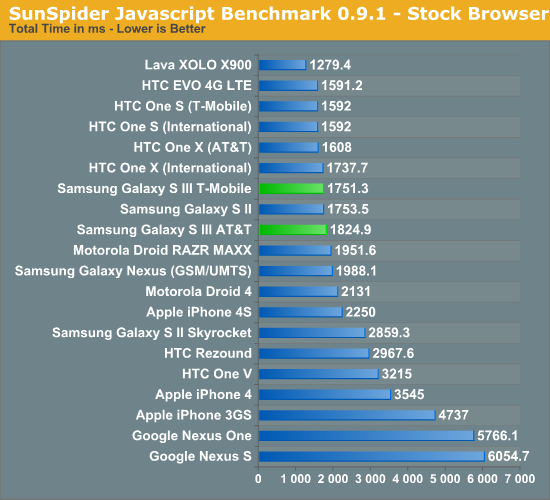
Like the other 1.5 GHz MSM8960 devices, the SGS3 does pretty well, but still is around 150ms slower. I ran this test multiple times but consistently got results in the 1750s or low 1800s for the SGS3s.
Browsermark is the next JavaScript test in our suite, and here it does very favorably against the rest of the competition.
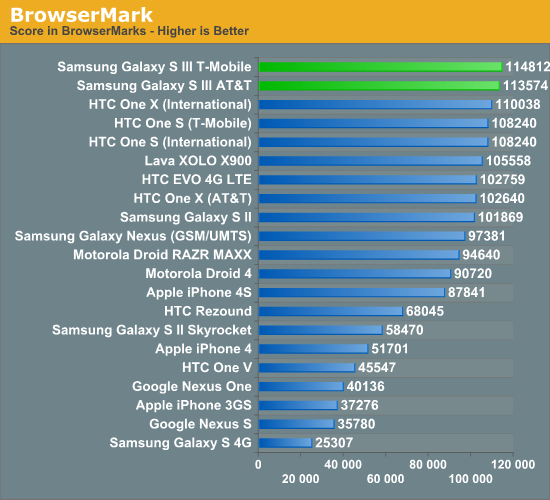
It’s interesting to see the SGS3 not do stellar in Sunspider, but excellent in Browsermark. Note that in our preview piece, I did see the International SGS3 post a score of 161k here.
Next up is Vellamo, which is a Qualcomm benchmark developed originally for OEMs to use and optimize their browser performance, and later released for general use. It’s a regular member of our test suite and includes both JavaScript tests and scrolling tests that stress the display composition and hardware acceleration in the browser.
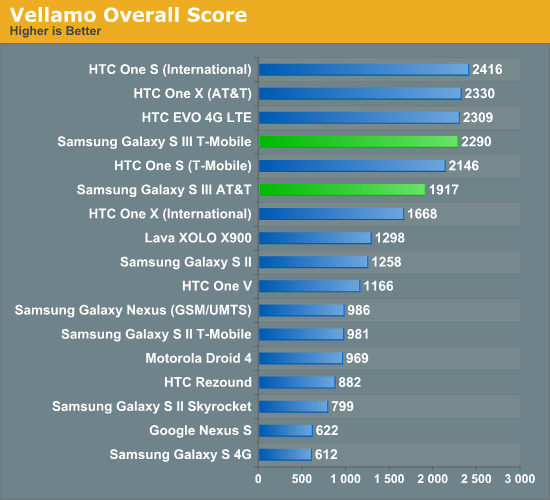
I saw an interesting deviation here between the AT&T and T-Mobile version, for reasons I cannot explain despite multiple reboots and making sure everything was closed. Either way, the devices both have stock browsers that feel like butter, absolutely smooth when translating or zooming around.
Low Level FP Performance
Linpack isn’t a great indication of overall smartphone performance, but it is a good test of the floating point capabilities of the CPUs in these SoCs. ARM has steadily been improving FP performance for the past few generations but we’re going to see a big jump to Krait/A15. As most client smartphone workloads are integer based and those that are FP heavy end up relying on the GPU, an advantage here doesn’t tell us much today (particularly because Linpack isn’t running native code but rather atop Dalvik) other than how speedy the FPUs are. There’s a new port of Linpack which runs using native code which we’ll be trying out in the big performance comparison piece.
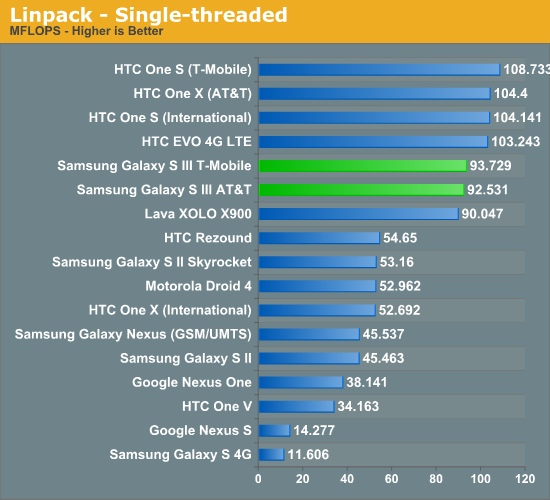
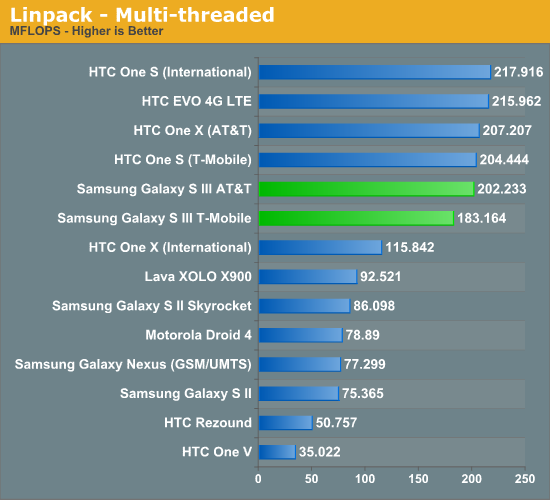
As we’ve shown before, FP performance on Krait is superb thanks to its architectural advantages over a straight A9. I find that FP performance was more relevant of a benchmark when display rendering was being done in CPU instead of on the GPU with the new OpenGL ES 2.0 render paths. Still, it’s worth talking about.
BaseMark OS
Rightware’s BaseMark OS is a general purpose benchmark designed to better simulate overall Android performance. It includes a heavily threaded benchmark, file IO tests, and compression/decompression tasks that all contribute to its overall score.
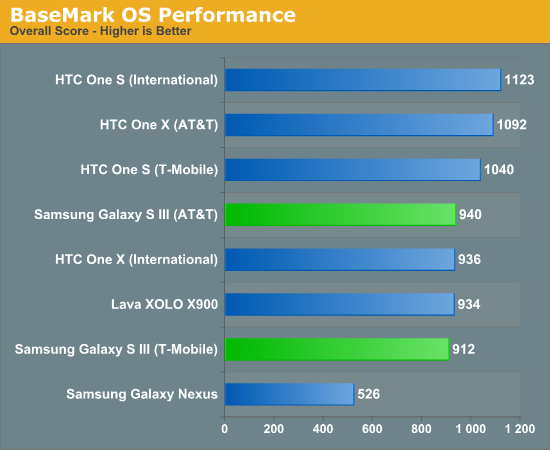
Basemark OS is relatively new to us but we’re adding more and more phones as time goes on for comparison purposes. Curiously enough the SGS3s post numbers a bit shy of their HTC cousins. I think that in spite of this, you’d be hard pressed to tell the Krait based One X and Krait based SGS3 apart.
GPU Performance - GLBenchmark 2.1
As we wait for actual 3D gaming benchmarks to make their way into Android (and hopefully crossplatform) games, we must rely on synthetic tests designed to simulate 3D game performance as best as possible. We start with GLBenchmark, one of the better Android GPU tests on the market today. There are two benchmarks, Egypt and Pro, and each is run in two modes: native screen resolution and offscreen (vsync disabled) at 720p. The latter is more useful for apples to apples comparisons as everything is rendering the same number of pixels, whereas performance in the onscreen tests is determined by the screen resolution of the device along with the performance of its GPU.
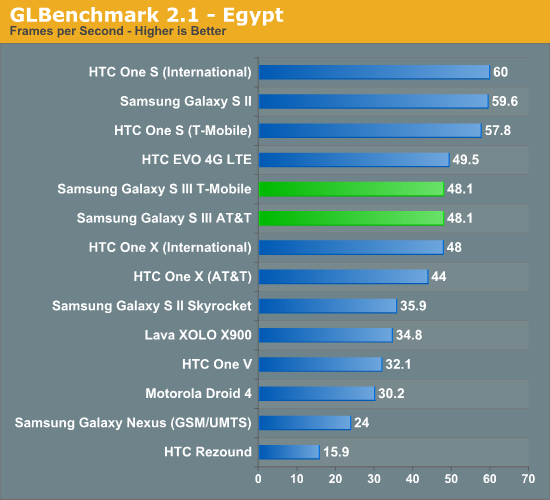
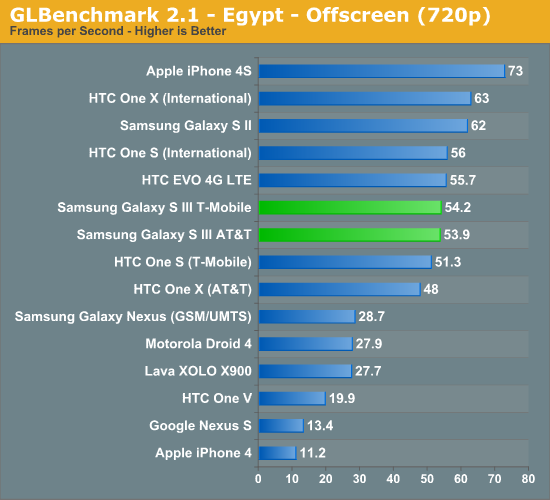
As a reminder, only the Egypt offscreen test takes place with vsync turned off, which is why you see devices with 720p displays posting different results on versus off screen where vsync is off. Part of the deal in getting Krait to market as quickly as possible required that Qualcomm pair the CPU with an older GPU, in this case the Adreno 225 instead of the newer Adreno 3xx offerings due out later this year in SoCs like MSM8960 Pro or the quad core Krait APQ8064. As a result, you can see the SGS2 with Exynos 4210 pull ahead in both tests. Obviously the on-screen test isn’t a totally fair comparison because of the inherent difference in resolution - 720p vs WVGA.
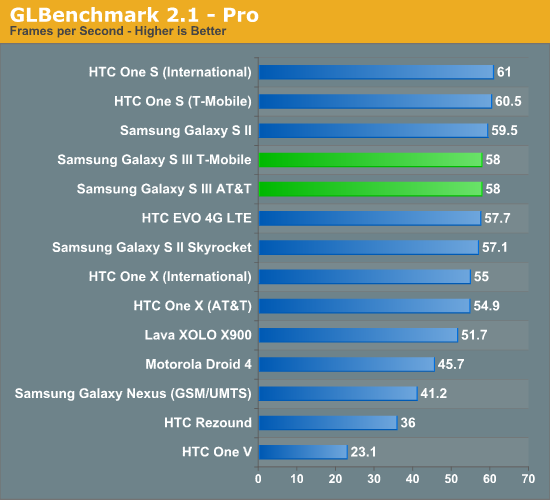
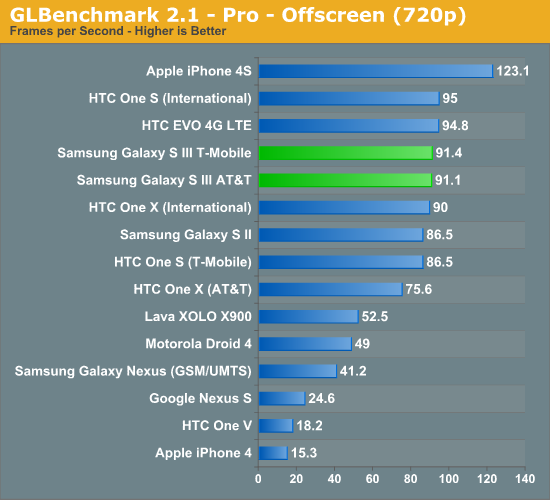
In the older Pro offscreen test, we see Adreno 225 trading spots with SGS2’s Mali–400 and coming out on top.
Basemark ES 2.0 V1
Rightware’s Basemark ES 2.0 V1 is an aging GPU test that tends to favor Qualcomm’s Adreno GPUs above almost all others:
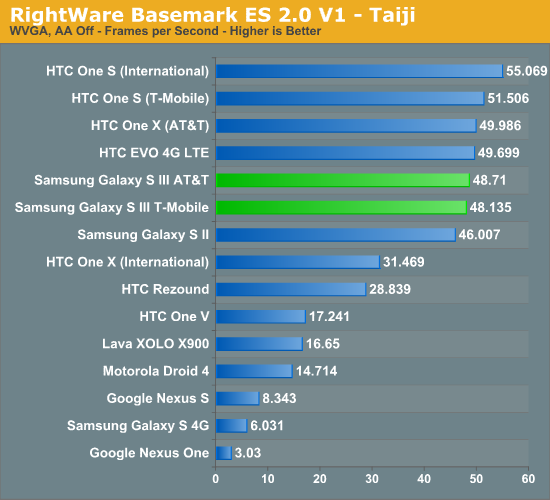
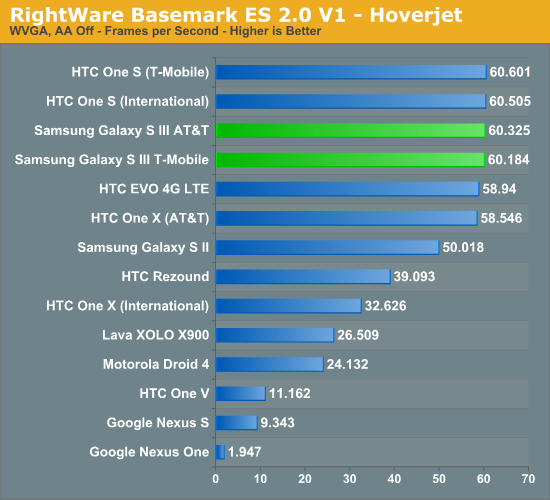
Basemark ES 2.0 is definitely starting to show its age, as Hoverjet is at vsync essentially the whole time, and Taiji is getting there as well. In addition, Qualcomm appears to be using ES 2.0 as an optimization target, so I wouldn’t put too much faith in the ES 2.0 results.


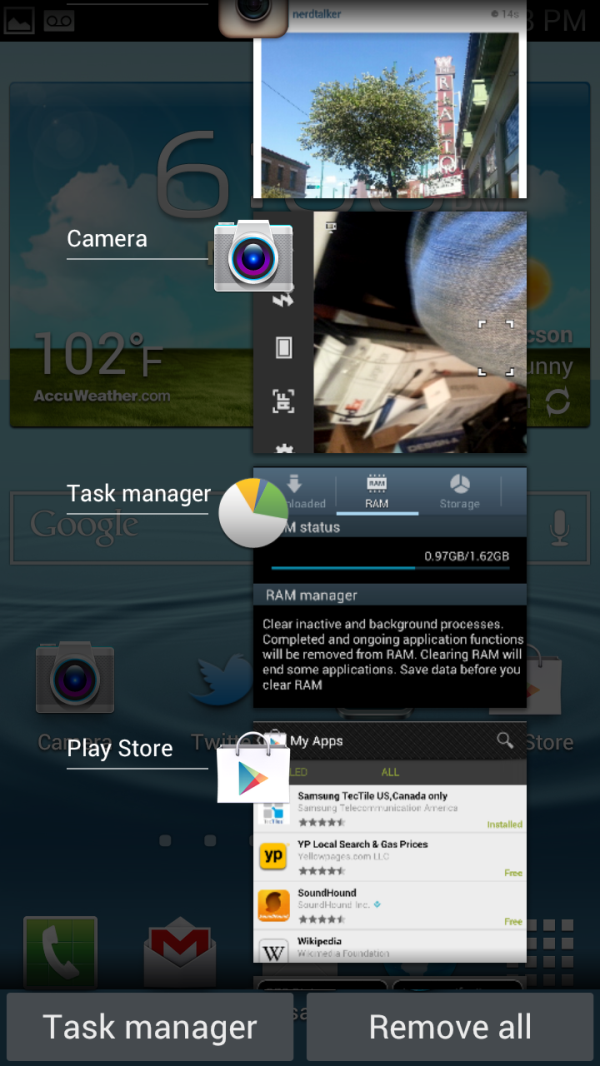
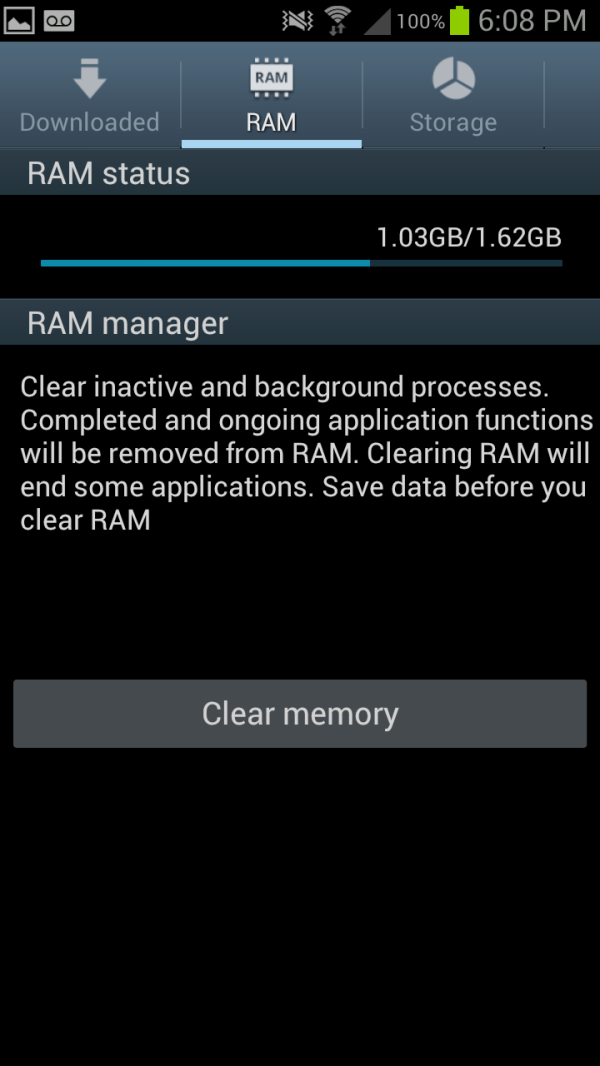








107 Comments
View All Comments
geniekid - Wednesday, June 20, 2012 - link
Thanks for the review. Anandtech does it the most thoroughly, probably because you guys are engineers instead of just enthusiasts (not hating on enthusiasts, just loving the engis).Can't wait for the LTE and sound tests. Hopefully this article will get a bump on the front page when those results come in.
sitharien - Wednesday, June 20, 2012 - link
I see you have numbers from Sprint's One X, and that phone has been out for a couple of weeks. Did the review get side tracked?BSMonitor - Wednesday, June 20, 2012 - link
I thought all the trolls said this phone would DOMINATE the iPhone 4S.. Yet...shaolin95 - Wednesday, June 20, 2012 - link
Are you retarded or something? There are many Android phones that totally humiliate that over priced piece of junk...grow up apple zombie.steven75 - Friday, June 22, 2012 - link
Charts don't lie, son.behindthepen - Wednesday, June 20, 2012 - link
"We’ve already seen dual core Krait (MSM8960) performance before and talked about it in the HTC One X (AT&T) review. "can you confirm that, I was under the impression the One X at AT&T ran a Tegra 3.
It would be super helpful if you could list the processors somewhere near all of the performance data.
Impulses - Wednesday, June 20, 2012 - link
All US One variants run S4, its nit exactly a secret....Skiddywinks - Wednesday, June 20, 2012 - link
International One X's are Tegra, US ones are S4.tuxRoller - Wednesday, June 20, 2012 - link
Great article. Quite disappointed with the battery life when compared to the One X (att), though I suppose that is mostly due to the differences in screen tech.A nice addition to the battery life section would be to add an efficiency chart so we can see past the varying battery sizes.
Thanks,
Liam
dijimoto - Wednesday, June 20, 2012 - link
What version of ICS does the Galaxy SIII have on it's phone? Also, is the Galaxy Nexus phones tested with 4.0.4 version or the 4.01 / 4.02 version? I read and heard from many Galaxy Nexus phone users that their was a lot of improvements in battery life. I'm just wondering how much, and if the Galaxy Nexus phone would move up in the list of all the other phones.